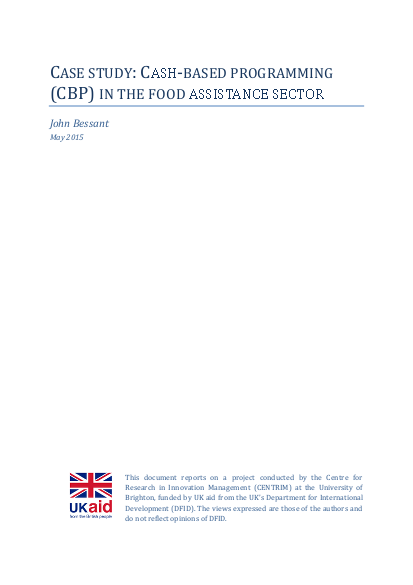
The purpose of this case study is to explore the pattern of innovation in the food supply and distribution area (i.e. not concerned with nutrition). In this and other case studies of the humanitarian innovation (HI) ecosystem we are using a framework for analysis based on a number of components, including:
? Resources: what resources - finance, time, knowledge, technologies - are available for humanitarian innovation, and how are these deployed? ? Roles: who plays what roles in innovation efforts and processes? What, specifically, are the roles of innovators, end-users, front-line workers, brokers, researchers, private sector and non-traditional actors? ? Relationships: what kinds of relationships and networks exist between actors in the innovation ecosystem (competitive, collaborative, contractual, commercial, etc.), and how do these shape innovation efforts? ? Rules: what formal and informal rules pertain to humanitarian work and humanitarian innovation specifically, and how do they serve to shape roles, determine relationships, resource allocations, and shape innovation processes? ? Routines: what are the specific ways in which innovation processes work in the sector, and how well do these work? ? Results: how do innovation results get determined, and by whom, and how does this impact on the success or otherwise of innovations?
Each of these components are then integrated into a systems map which has also been developed by the University of Brighton project team as a means by which the different elements and interactions (invention, development and adoption of innovations) of the innovation ecosystem can be better understood.
